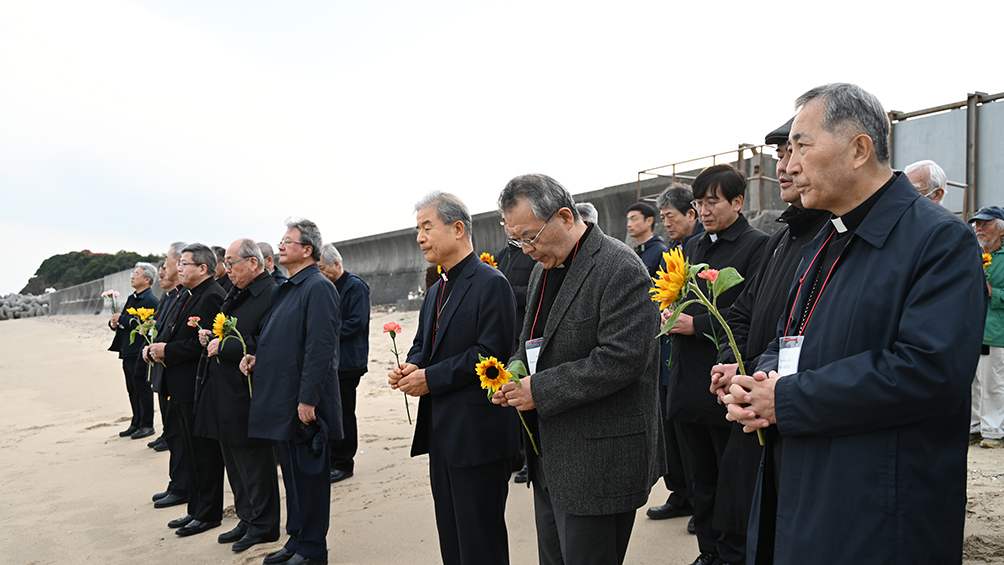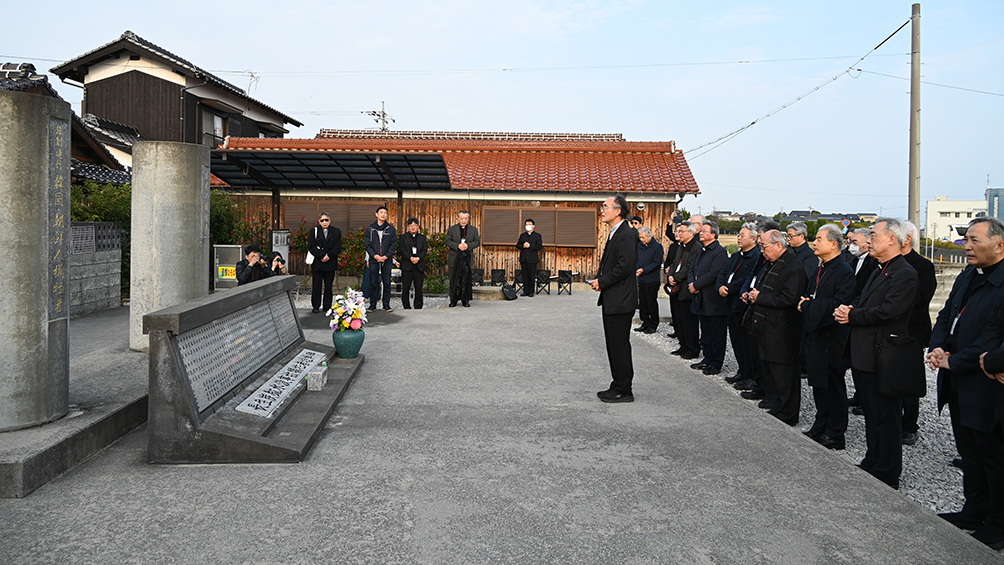By reporter Lee Ji-hye
November 19, 2025

【 Yamaguchi, Japan】 Korean and Japanese Catholic bishops gathered on November 17th at the Marunami coast in Ube, Yamaguchi prefecture, pausing before two concrete shafts—the surviving air vents of the former Ch?sei undersea coal mine—that still protrude from the calm water. Sunflowers laid by the bishops drifted slowly on the tide.
“The village where I lived was a flowering mountain valley. Peach blossoms, apricot blossoms, young azaleas… I long for those days,” one bishop murmured, before several Korean bishops began to sing “Gohyang-eui Bom (Spring of My Hometown)”. Others joined softly. The impromptu hymn served as a modest memorial for the Korean labourers who, taken from their homes during Japan’s occupation of the Korean peninsula, died beneath these waters. Moments earlier, the group had prayed together at the memorial for the victims of the Ch?sei mine flooding disaster.

The Ch?sei coal mine opened in 1914 as an undersea operation. At its height it employed more than 1,000 workers and produced roughly 160,000 tonnes of coal a year. On February 3rd 1942 abnormal inflows of seawater caused part of the mine to collapse, killing 183 workers—136 of them Koreans.
Long overlooked, the tragedy returned to public attention in 1976 after the historian Yamaguchi Takenobu published an academic study of the incident. In 1991 he founded the Association to Record the Ch?sei Mine Water Disaster in History. In 2013 the group erected a memorial and established the Ch?sei Mine Memorial Square.
“In 2024 we began full-scale underwater recovery of remains, and some were retrieved this year,” said Inoue Y?ko, the Association’s co-representative. “Identification work is under way. This process exposes wrongdoing within Japanese history.” She said the Association would continue its efforts to restore the dignity of the Korean victims and press the Japanese government to acknowledge responsibility.

Bishop Lee Ki-heon, former head of the Uijeongbu diocese, who last visited the site two years ago, said: “It pains me to think of the Korean labourers forcibly brought here who died in an undersea mine. Now that recovery has begun, I hope the two governments will co-operate to reach a just conclusion.”
After offering prayers and flowers, the bishops stood watching as the sunflowers floated out to sea—the waters that still hold the story of the nameless Korean workers who perished 83 years ago.
The visit marked the opening of the 27th Korea–Japan Bishops’ Exchange Meeting, which runs until November 20th. This year’s theme is “Scars and Hope, 80 Years After the War: Passing Peace to the Next Generation.”